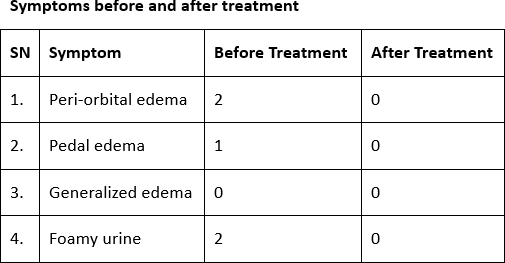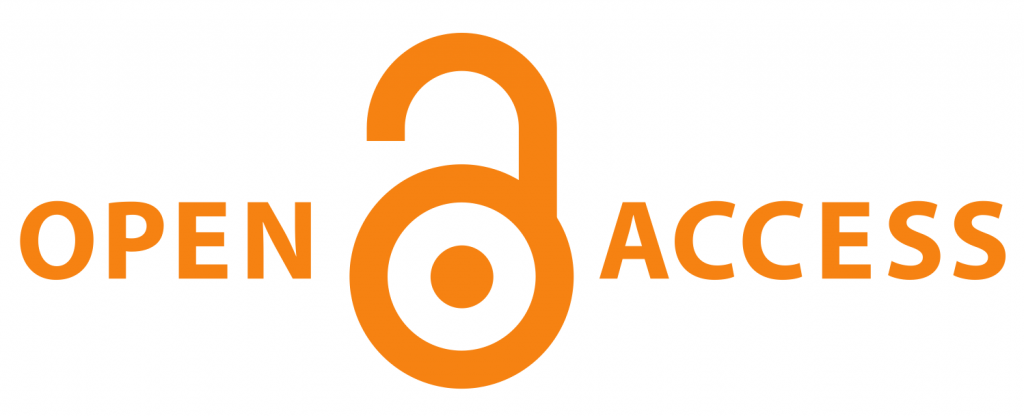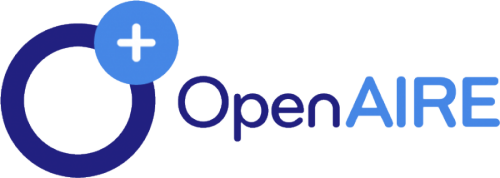Ayurvedic treatment approach for Primary Nephrotic Syndrome - A Case Study
DOI:
https://doi.org/10.21760/jaims.10.9.54Keywords:
Ayurvedic treatment, Primary nephrotic syndromeAbstract
Background: Up to 20% of end-stage renal disease and 12% of the causes of chronic kidney diseases are related to primary nephrotic syndrome. Nephrotic syndrome is one such burning problem which effects the school going child due to exaggerated immune response like auto-immunity following a viral infection. The incidence is 2 to 7 per 1,00,000 children per year. Corticosteroids are frequently needed by patients to achieve remission, however many patients either relapse after remission or do not react to them. The better alternative is, however far from established. Objectives: To evaluate the efficacy of a multimodal Ayurvedic treatment for nephrotic syndrome patient. Methods: A 10-year-old boy, diagnosed case of primary nephrotic syndrome, with complaint of swelling of face, proteinurea and recurrent respiratory tract infection. Based on the patient's observed indications and symptoms, a treatment plan was developed. The protocol includes Ksheerpaka of herbal drugs powder (Yashtimadhu, Shatavari, Guduchi, Gokshura, Musta, Punarnava, Mandukparni and Vidari) along with Chandanasava, Punarnavasava, Gokshuradi Guggulu and Arogyavardhini Vati, Chandraprabha Vati orally, with some dietary modifications. Results: The treatment approach demonstrated success in reducing proteinuria and facial swelling. During the follow-up period, no unfavourable impacts were observed.
Downloads
References
1. Kliegman RM. Nelson Textbook of Pediatrics. 17th ed. Philadelphia: Saunders; 2011. p.1753.
2. Bagga A, Mantan M. Paediatric nephrotic syndrome. Indian J Med Res. 2005 Jul;122(1):13–28.
3. Vogt BA, Avner ED. Nephrotic syndrome in children. In: Avner ED, Harmon WE, Niaudet P, editors. Pediatric Nephrology. 5th ed. Philadelphia: Lippincott Williams & Wilkins; 2004. p. 545–76.
4. Behrman RE, Kliegman RM, Jenson HB, Stanton BF, editors. Nelson Textbook of Pediatrics. 18th ed. Vol. 2. Philadelphia: Saunders; 2008. p.2190–5, 2223–8.
5. Kliegman RM. Nelson Textbook of Pediatrics. 17th ed. Philadelphia: Saunders; 2011. p.1753.
(Duplicate of Ref 1, retained as per instruction)
6. Acharya YT, editor. Sushruta Samhita of Sushruta with Nibandhasangraha Commentary by Dalhana. Sutra Sthana, Chapter 15. Varanasi: Chaukhambha Orientalia; reprint edition.
7. Dutt K, Acharya SK. Role of Sthiradi Yapana Basti and an Indigenous Compound in the Management of Minimal Change Nephrotic Syndrome W.S.R. to Aberrations of Ojas. J Ayurveda. 2019;13(2):20–7.
8. Sharangadhara. Sharangadhara Samhita. Madhyama Khanda, Chapter 7, Verses 40–45. Varanasi: Chaukhambha Publishers; reprint edition.
9. Sharangadhara. Sharangadhara Samhita. Madhyama Khanda, Chapter 7, Verses 84–87. Varanasi: Chaukhambha Publishers; reprint edition.
10. Anonymus. Rasendrasara Sangraha. Jwara Rogadhikara, Verse 13–105. Varanasi: Chaukhambha Orientalia; reprint edition.
11. Govind Das Sen. Bhaishajya Ratnavali. Shukrameha Chapter, Verses 34–38. In: AFI Formulations. Vol. 1. New Delhi: CCRAS; reprint edition.
12. Govind Das Sen. Bhaishajya Ratnavali. Shoth Roga Adhikara, Verses 197–201. Varanasi: Chaukhambha Orientalia; reprint edition.

Published
How to Cite
Issue
Section
License
Copyright (c) 2025 Aisha Amrin Jahan Qadari, Shrinidhi Kumar K., Ankita

This work is licensed under a Creative Commons Attribution 4.0 International License.














